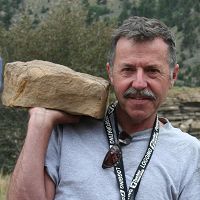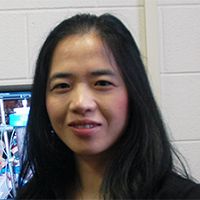Duffy et al., 2014
Designing a Suite of Models to Explore Critical Zone Function
Duffy, C., Shi, Y., Davis, K., Slingerland, R., Li, L., Sullivan, P. L., Godderis, Y., Brantley, S. L. (2014)
Procedia Earth and Planetary Science, Vol 10, p 7-15
-
Shale Hills, INVESTIGATOR
-
Shale Hills, INVESTIGATOR
-
Shale Hills, INVESTIGATOR
-
Shale Hills, INVESTIGATOR
-
Shale Hills, INVESTIGATOR
-
Calhoun, Shale Hills, INVESTIGATOR, COLLABORATOR
-
National, Eel, Luquillo, Shale Hills, INVESTIGATOR, COLLABORATOR
Abstract
The Critical Zone (CZ) incorporates all aspects of the earth's environment from the vegetation canopy to the bottom of groundwater. CZ researchers target processes that cross timescales from that of water fluxes (milliseconds to decades) to that of the evolution of landforms (thousands to tens of millions of years). Conceptual and numerical models are used to investigate the important fluxes: water, energy, solutes, carbon, nitrogen, and sediments. Depending upon the questions addressed, these models must calculate the distribution of landforms, regolith structure and chemistry, biota, and the chemistry of water, solutes, sediments, and soil atmospheres. No single model can accomplish all these objectives. We are designing a group of models or model capabilities to explore the CZ and testing them at the Susquehanna Shale Hills CZ Observatory. To examine processes over different timescales, we establish the core hydrologic fluxes using the Penn State Integrated Hydrologic Model (PIHM) – and then augment PIHM with simulation modules. For example, most land-atmosphere models currently do not incorporate an accurate representation of the geologic subsurface. We are exploring what aspects of subsurface structure must be accurately modelled to simulate water, carbon, energy, and sediment fluxes accurately. Only with a suite of modeling tools will we learn to forecast – earthcast -- the future CZ.
Citation
Duffy, C., Shi, Y., Davis, K., Slingerland, R., Li, L., Sullivan, P. L., Godderis, Y., Brantley, S. L. (2014): Designing a Suite of Models to Explore Critical Zone Function. Procedia Earth and Planetary Science, Vol 10, p 7-15. DOI: 10.1016/j.proeps.2014.08.003
 This Paper/Book acknowledges NSF CZO grant support.
This Paper/Book acknowledges NSF CZO grant support.
Explore Further







